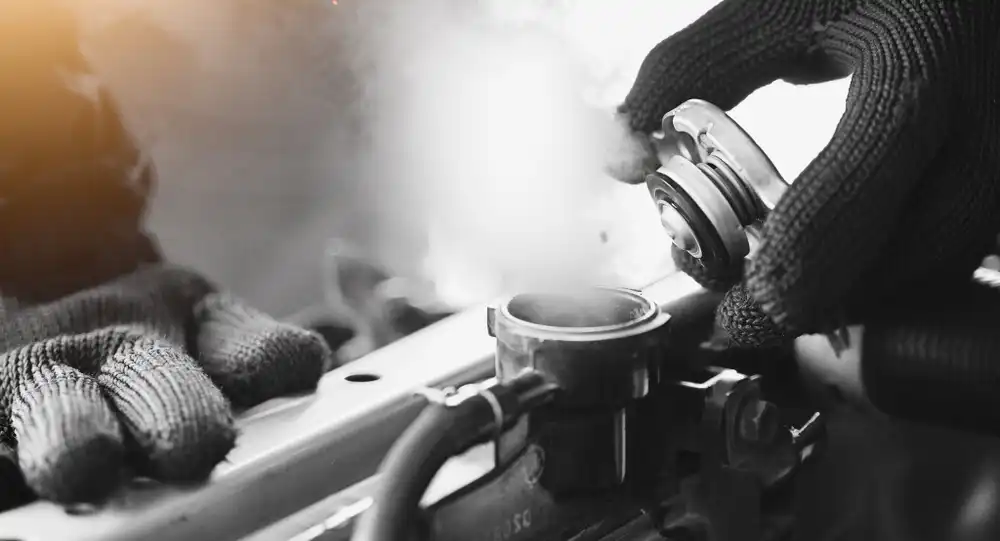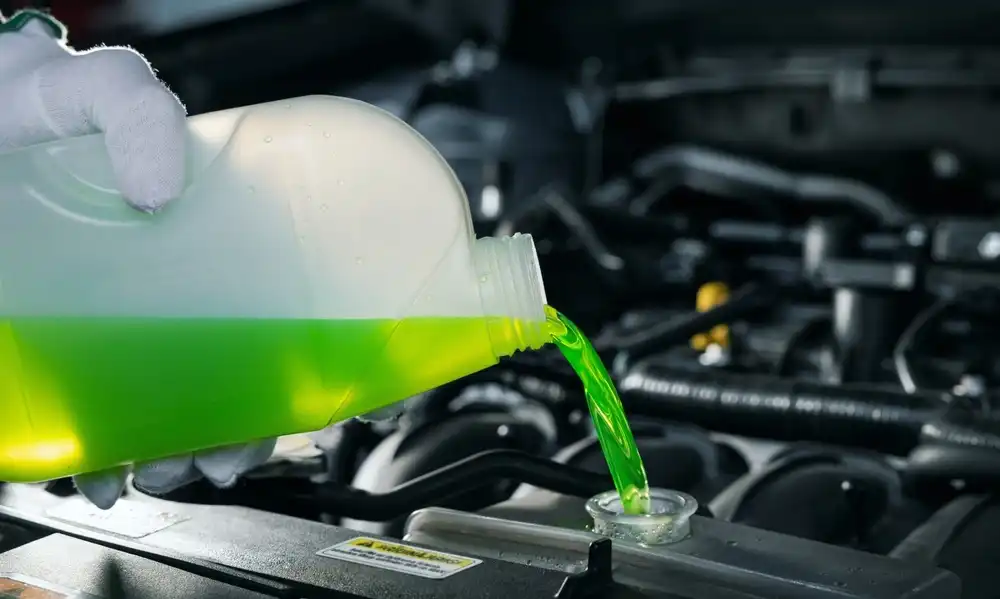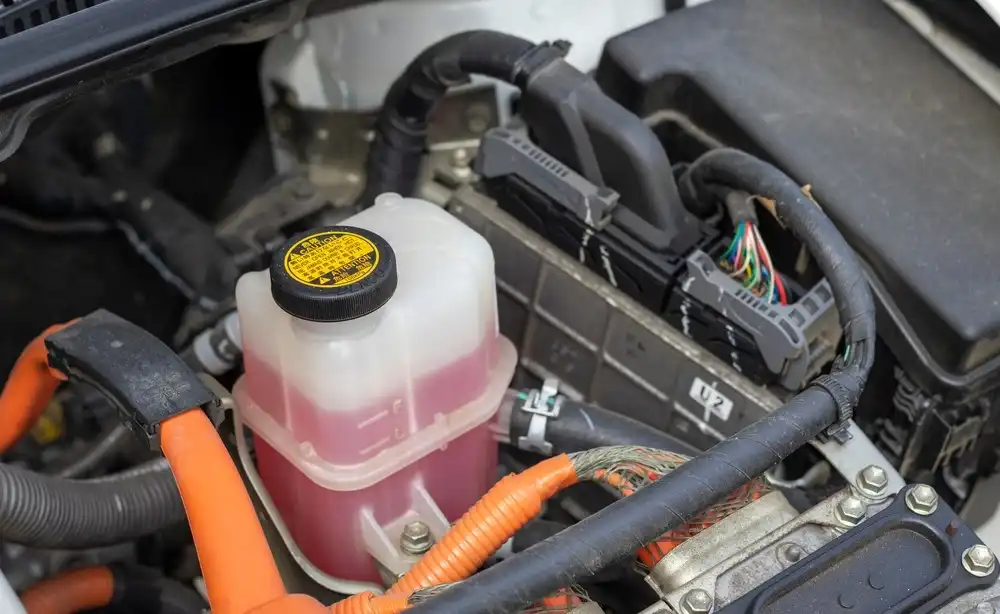Being a car owner, if don’t know about the engine cooling system then this would be negligence that have terrible consequences. Car engine cooling system plays vital role to protect it from overheating and for maintaining optimal temperature for better performance. You won’t be familiar with what goes in the radiator either. Typically, antifreeze coolant in car is a fluid that maintain the optimal temperature of engine block, absorb the excessive heat, disperse it into the atmosphere to protect from overheating. In short, it’s the blood of car engine that enhance its performance.
Antifreeze are additives that are mixed with coolant in specific proportion that prevent freezing effect in your car engine during cold weather conditions. Imagine you are living in Fargo United States, where winters are frosting cold.
The ordinary water or coolant if not coupled with antifreeze in your car will get freeze and would burst the radiator pipes. The newly filled coolant will also get leaked from the engine cooling system and you end-up with severe hiccup. So, this read will elaborate the importance of antifreeze coolant and other necessary things that you would miss if you bypass.
Checking coolant levels regularly is a mandatory and recommended by automobile technicians because if overlooked can be a setback while you are on the long drive. You should be familiar with the perfect coolant levels in your car and well aware of about the replacement cycle. Today Reader will guide you about all things you should know about how to check the coolant level in your car. So, keep reading till the wrap-up so won’t miss the details about antifreeze coolant and how to check the levels of coolant in your car at your own.
How to Tell if My Coolant Level is Too Low: What to Look for
Avoid checking the coolant level while car engine is running because it can cause injury. High pressure develops at running engine inside the radiator that can splash out the fluid filled inside which can burn your skin. Firstly, ensure that car engine is cool and then open the radiator cap gently with cloth wrapped on your hand or wear the safety gloves.

Always use gloves while opening the radiator cap to avoid burns due to the hot steam blowing out from the radiator neck
You can also check the car coolant levels directly from the coolant reservoir without opening the radiator cap. Coolant reservoirs in car is generally made up of mild transparent plastic so you can visually check the coolant levels from the level markings provided on the reservoir body.
Typically, the car coolant reservoirs come with LOW and FULL engraved markings on their body. You can visually check the liquid level inside from the outer body. If, the coolant level is lower than or touching the LOW value, add the liquid coolant to the reservoir. Ideally, it should be in between LOW and FULL value.
Check the directly from the radiator in older cars. If the coolant level is low visually then fill up till the neck of the radiator opening and close the radiator cap. Perform Antifreeze coolant bleeding in radiator regularly to avoid air bubbles in the engine cooling system. Check other engine cooling system component such as rubber hoses and their connection of visual damage and leak.
Risks of Low Coolant level in Car
It could an alarming if low coolant level in car remains unchecked. You’ll end up with ceased engine, severe damage to the engine components, can’t drive the car, and more which are discussed below:
- Overheating: Insufficient coolant levels would not be able to maintain the engine optimal temperature and cause engine overheating. It results in damage to engine parts and cracks in the engine components.
- Burning of head Gasket: Overheating can cause head gasket leakage resulting the coolant and engine oil mixing. Head gasket repairs are costly and time taking.
- Engine Ceasing: Low coolant levels might be catastrophic If overlooked for longer period. It can cause complete engine seize which engine up with complete engine failure.
- Damage other Engine Cooling System Components: Low Coolant in car may cause over pressurization in the radiator which leads to excessive overflows, damaging hoses, or leak. Thus adding additional coolant leak repair cost.
- Low Fuel Average: The engine with low coolant levels consumes more fuel then normal which dramatically effect the fuel average. Overheating in engine disturb the suitable fuel and air mixture and engine started consuming excessive fuel.
So, keep checking your engine coolant level regularly to avoid any bad happening. Keep monitoring the temperature gauge on car dashboard occasionally.
When to Schedule Repairs
Generally filling the water or coolant fluid in the radiator yourself is sufficient you observe low level. If you monitor high temperature on your temperature gauge, stop the vehicle, cool it with poring simple water on the radiator. Once, temperature gauge moves on the middle position then switch OFF the engine and wait for the engine cooling. Check the coolant level in the radiator directly, if you feel the sludgy or oil in the coolant then it’s a warning signal to look for car repair shop nearby. Coolant and oil mixing in the radiator is potential sign of head gasket failure which needs immediate repairs to get the engine to life. If overlooked may cause sever damage to the engine pitons, crank shaft and other core engine components.
Overheating put your car and you in danger because it cost you more if ignored.
When to Check Coolant & Change Coolant
Similar to other fluids in your car, the coolant levels may get low with the passage of time and it should be replaced occasionally. Check the coolant level in the cooling system every three to six months to ensure that everything is perfect. The engine coolant comes in different colors with different properties. Generally, healthy coolant is in green, yellow, red, or blue colors. If you see the brownish tint or colorlessness then potentially you should flush the system and replace the coolant. Changing car coolant is DIY thing that does not need specific technique and you can replace it at your own.
Caution: Do not open the radiator cap while engine and radiator are hot. The steam inside the radiator may blow out and can cause burns and severe injury.
How to Know if Your Car Needs Coolant
You easily check whether your car coolant needs replacement from radiator. Paying attention to the engine cooling system saves your car and costly repairs and eliminate journey stress. Constantly checking coolant level ultimately reduce anxiety and panic. Below are few indications that simulates that your car coolant level is seriously low:
- Overheating caution on the temperature gauge
- A sweet smell coming from the engine
- Low fuel milage or poor gas average
- Coolant residue in the engine room
- Car heater won’t work
- Temperature needle abnormal moment or unstable
If you notice one of those indications in your car then it’s time to look for qualified car technician nearby. Book a call with your automobile technician and thoroughly elaborate the car condition and symptoms. It will late too if you kept ignoring temperature indicators and would cost you more than usual aspect.
What if you don’t add the coolant in time?

Not adding coolant while it is evidently low won’t produce any good. The car with fresh coolant filled in its coolant is more worth than the vehicle you can’t even drive it to an auto shop. Low coolant in car blows your engine head gasket. Excessive moisture with smoke from engine or tailpipe is the indication of blown head gasket that leads to overheating and engine seize and ultimately you have to bear expensive repairs.

